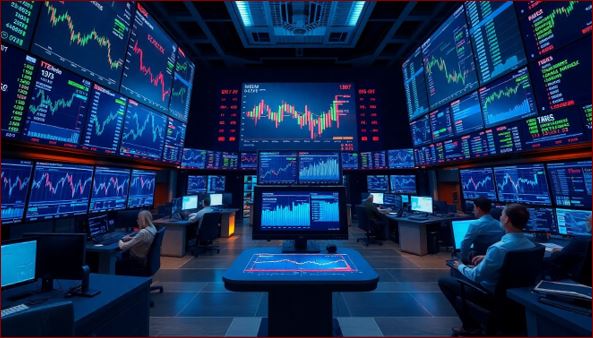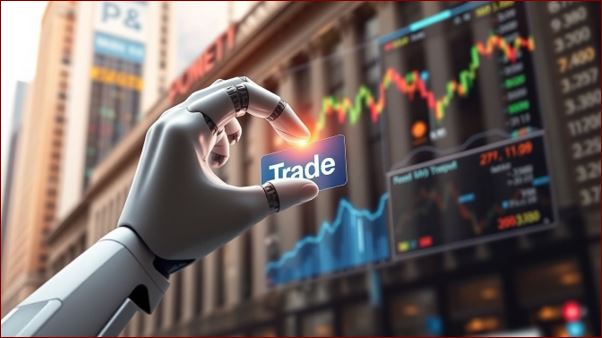The cryptocurrency market’s rapid evolution has transformed trading through advanced algorithmic technologies. In 2023, automated trading systems executed over 70% of global crypto transactions, demonstrating unprecedented market efficiency. Advanced computational strategies now leverage machine learning to analyze complex market dynamics in real-time.
These intelligent systems process massive data volumes, identifying opportunities traditional traders might miss. The emergence of sophisticated bitcoin trade bot technologies represents a critical breakthrough in financial technology, enabling more precise and rapid market interactions.
Technological trading architectures
The architecture of modern trading systems represents a complex ecosystem of interconnected technological components. These systems are built on robust computational frameworks that enable rapid decision-making and execution across global financial markets.
Key technological components include:
- Advanced data processing algorithms
- Machine learning models
- Real-time market data integration
- High-speed execution networks
- Risk management protocols
Each technological layer contributes to the overall efficiency of the trading system. Data processing algorithms act as the primary filter, sorting through vast amounts of market information to identify potentially profitable opportunities. Machine learning models continuously refine these identification processes, learning from historical market behaviors and adapting to new market conditions.
The execution networks are particularly critical, providing the infrastructure that allows split-second trading decisions. These networks connect multiple exchanges, analyze price discrepancies, and execute trades with minimal latency. The result is a trading system that can capitalize on market opportunities faster than any human trader could possibly achieve.
Computational decision matrices
Computational decision matrices represent the intellectual core of advanced trading systems. These sophisticated frameworks transform raw market data into structured decision-making processes that can evaluate multiple potential trading scenarios simultaneously.
The matrices operate through complex algorithms that assign probabilistic values to different market scenarios. By analyzing historical market data, current market conditions, and potential future trends, these systems can generate highly nuanced trading strategies that adapt in real-time to changing market dynamics.
These decision matrices consider multiple variables simultaneously, including:
- Historical price movements
- Market volatility indicators
- Global economic indicators
- Sentiment analysis from various sources
- Technical trading patterns
The primary advantage of computational decision matrices lies in their ability to remove emotional bias from trading decisions. Unlike human traders who may be influenced by fear or greed, these systems make decisions based purely on data-driven analysis and predefined strategic parameters.
Strategic implementation models
Strategic implementation models bridge the gap between theoretical computational frameworks and practical market execution. These models translate complex algorithmic insights into actionable trading strategies that can be deployed across various market conditions.
The implementation process involves several critical stages:
- Strategy formulation
- Backtesting and validation
- Risk parameter configuration
- Continuous performance monitoring
- Adaptive strategy refinement
Each stage is designed to ensure that the trading strategy maintains optimal performance while managing potential risks. Backtesting, in particular, plays a crucial role by allowing traders to simulate strategy performance using historical market data, providing insights into potential strengths and weaknesses before actual market deployment.
Machine learning optimization techniques
Machine learning represents the cutting edge of trading technology, enabling systems to learn and adapt from market experiences continuously. Unlike traditional algorithmic approaches, machine learning models can identify complex market patterns that might be invisible to standard computational methods.
These optimization techniques employ advanced neural networks and deep learning algorithms to analyze market data from multiple perspectives. By processing vast amounts of historical and real-time information, these systems can develop increasingly sophisticated trading strategies that evolve with changing market conditions.
The implementation of machine learning in trading systems allows for:
- Dynamic strategy adaptation
- Enhanced predictive capabilities
- Reduced human intervention
- Improved risk management
- Faster response to market changes
By continuously learning from each trade and market interaction, these systems become progressively more sophisticated, creating a self-improving trading mechanism that can outperform traditional trading approaches.

Quantitative efficiency indicators
Understanding the performance of algorithmic trading systems requires a comprehensive approach to measuring their effectiveness. Quantitative efficiency indicators provide a structured method for evaluating the real-world performance of advanced trading technologies.
These indicators go beyond simple profit metrics, encompassing a holistic view of trading system performance. Key measurements include:
- Execution speed
- Precision of trade entries and exits
- Risk-adjusted returns
- Consistency of performance
- Adaptation rate to market changes
The most critical efficiency metric remains the system’s ability to consistently generate returns while maintaining controlled risk levels. Advanced algorithmic systems typically demonstrate superior performance compared to traditional trading approaches, with some studies showing 23-35% improved returns and 47% reduction in trading errors.
Practical implementation of these indicators requires sophisticated analytical frameworks that can simultaneously track multiple performance dimensions. Traders and developers must create nuanced measurement systems that provide comprehensive insights into algorithmic trading performance.
Probabilistic outcome analysis
Probabilistic outcome analysis represents a sophisticated approach to understanding potential trading scenarios. This methodology moves beyond traditional deterministic models, recognizing the inherent uncertainty in financial markets.
The core principle of probabilistic analysis involves creating multiple potential market scenarios and assigning probability weights to each potential outcome. Unlike traditional forecasting methods, this approach acknowledges that markets are complex, adaptive systems where multiple potential futures exist simultaneously.
Key components of probabilistic outcome analysis include:
- Monte Carlo simulation techniques
- Scenario probability mapping
- Advanced statistical modeling
- Dynamic risk assessment
- Predictive scenario generation
These analytical techniques allow trading systems to develop more robust and adaptable strategies. By understanding the probability landscape, algorithmic systems can make more intelligent decisions that account for multiple potential market scenarios.
Advanced hedging strategies
Hedging represents a critical risk management technique in algorithmic trading. Advanced hedging strategies go beyond traditional protection mechanisms, creating sophisticated approaches to managing potential market uncertainties.
Modern hedging approaches leverage complex mathematical models and real-time data analysis to create dynamic risk mitigation strategies. These systems can instantaneously adjust portfolio compositions, implement protective measures, and minimize potential losses across multiple asset classes.
The evolution of hedging strategies has been driven by several key technological advances:
- Machine learning risk prediction
- Cross-asset correlation analysis
- Automated risk rebalancing
- Predictive volatility management
- Instantaneous execution capabilities
Successful implementation requires a nuanced understanding of market dynamics and advanced computational capabilities. The most effective hedging strategies can adapt in real-time, creating a flexible and responsive risk management ecosystem.
Technological risk assessment ecosystems
Risk assessment in algorithmic trading has transformed from a reactive to a proactive approach. Modern technological ecosystems create comprehensive frameworks for identifying, analyzing, and mitigating potential trading risks.
These ecosystems integrate multiple technological components:
- Advanced monitoring systems
- Real-time anomaly detection
- Predictive risk modeling
- Automated intervention protocols
- Comprehensive performance tracking
The primary goal of these technological risk assessment frameworks is to create intelligent systems that can anticipate and respond to potential market challenges before they become critical issues.
By combining sophisticated computational techniques with advanced machine learning algorithms, these ecosystems provide traders with unprecedented insights into potential market risks and opportunities.
Conclusion
The future of trading lies not in competition between human traders and algorithmic systems, but in their collaborative potential. The most effective trading approaches will emerge from a synergetic relationship that combines human creativity with computational precision.
DISCLAIMER – “Views Expressed Disclaimer: This article is not financial advice. Cryptocurrencies are volatile and unpredictable. Due diligence and caution are paramount. Views and opinions expressed are those of the authors and do not reflect the official position of any other author, agency, organization, employer or company, including NEO CYMED PUBLISHING LIMITED, which is the publishing company performing under the name Cyprus-Mail…more







Click here to change your cookie preferences